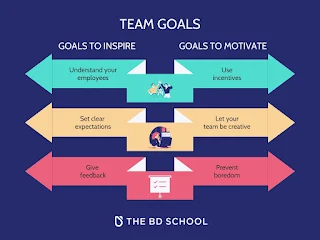Approximately 70% of all projects fail to deliver what was promised to customers. However, the implementation of a management process can reduce this failure rate to 20% or below
In the realm of project management, one of the most pivotal aspects of ensuring success is the cultivation of synchronicity.
Whether you are collaborating with in-house teams, external clients, stakeholders, or management, initiating universal accord right from the beginning can be the make-or-break factor for any project's outcome.
In this article, we shall delve into seven irreplaceable steps for fostering and harmonizing expectations within your teams and clients, with a distinct focus on step #3, a key player in this intricate process.
What is Expectation Alignment
Before we dive into the steps, let's unpack what it means to align expectations. Essentially, aligning expectations involves making sure that everyone involved shares the same goals and viewpoints. It's about clarifying the actions and contributions needed from each party to achieve the set goals. In simpler terms, when expectations are in sync, everything operates transparently.
The benefits of achieving this harmony are wide-ranging. They include increased productivity, improved performance, effective communication, and faster progress.
Furthermore, alignment can also result in happier employees and lower turnover rates. When team members clearly understand their roles and responsibilities, they are more engaged and motivated to contribute to the project's success.
Common Challenges in Attaining Alignment
While the concept of aligning expectations might seem straightforward in theory, in practice, it metamorphoses into a complex undertaking. The more individuals and teams involved in a project, the denser the web of communication channels and degrees of complexity one must navigate. Furthermore, when clients are introduced into the equation, the level of complexity significantly increases.
One common challenge in maintaining alignment is the use of disparate tools and systems by different teams. Project managers may have their task management systems, account management teams might use CRM tools like Salesforce, and financial departments may rely on accounting software like Quickbooks or Xero. Additionally, a development team managing tasks in Jira, and you have a recipe for misalignment.
Misalignment between teams and stakeholders can lead to a decrease in profits. To avoid this scenario, it's crucial to centralize information and communication.
How to Align Expectations from the Start
Now, let's submerge ourselves into the seven steps for cultivating alignment within your teams and clients:
Step 1: Acquaint Yourself with Your Team's Availability
Before embarking on a new project, it's imperative to show your team's availability. Knowing how many hours your team can allocate to the project helps in building a realistic schedule and managing changes effectively.
Step 2: Define Client Needs and Collect Project Requirements
The next step is to collaborate with your client to define project requirements and create a Statement of Work (SOW). Ensuring your team understands the client's vision is crucial at this stage.
Step 3: Establish a Project Foundation
Setting a project baseline involves breaking the project into milestones and estimating the hours of work required for each role. This baseline provides a detailed overview of project commitments, making it difficult to misinterpret and easy to align.
Step 4: Craft a Project Blueprint
Subdivide these milestones into tasks, assign them to team members, and ensure that task estimates harmonize with the initial milestone hours. Employ tools like Gantt charts for efficient project surveillance and communication.
Step 5: Validate the Scope & Secure Client Concurrence
Conduct a project demonstration for the client, affording them a visual comprehension of the project's initiation, progress, and any prospective changes. This practice ensures that all parties remain aligned.
Step 6: Leverage Time Tracking for Synchronization
Monitor time expenditure and employ workflow tools to visualize task advancement. Time logs furnish insights into time utilization, contributing to alignment.
Step 7: Extend an Invitation to Your Clients for Collaboration
Maintain continuous alignment by extending an invitation to clients for collaborative participation and providing them with real-time insights into project modifications and their consequences on scope, budget, and deadlines.
By adhering to these steps and centralizing information, you can perpetuate synchronization within your teams and clients throughout the project's lifecycle.
In Conclusion
The act of aligning expectations stands as a pivotal facet of triumphant project management. It necessitates the assurance that all stakeholders are united in their goals and comprehend their roles in attaining those objectives.
Although challenges may arise due to the diversity of tools and communication channels, employing a structured approach can surmount these hurdles. By adhering to the seven steps expounded upon in this article, with particular emphasis on the establishment of a project foundation, you can elevate communication, collaboration, and ultimately, the success of your project.


Comments
Post a Comment